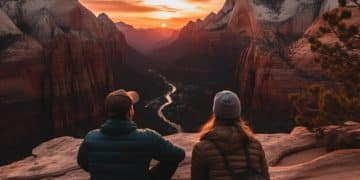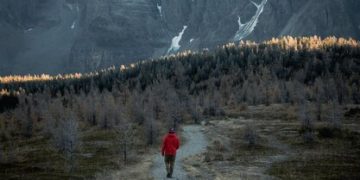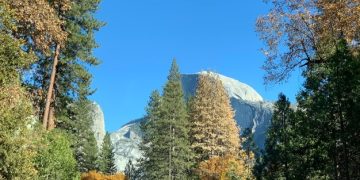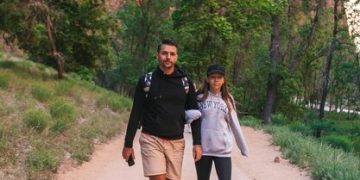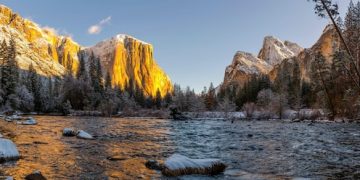The Complete Guide to Camping in US National Forests: Updated for 2025
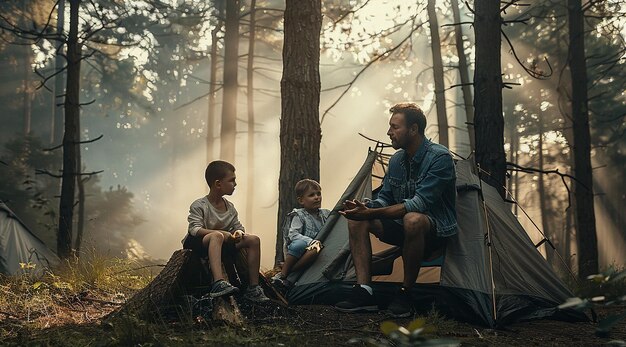
The Complete Guide to Camping in US National Forests: Updated for 2025 offers invaluable information for planning your next outdoor adventure, including permit requirements, designated campgrounds, safety guidelines, and tips for a memorable experience in America’s stunning natural landscapes.
Planning a camping trip in one of the US National Forests can be an incredibly rewarding experience. With vast landscapes, stunning natural beauty, and a plethora of outdoor activities, these forests offer something for every adventurer. This complete guide to camping in US National Forests: Updated for 2025 will help you plan your next unforgettable trip.
Whether you’re a seasoned camper or new to the outdoors, understanding the regulations, finding the best spots, and being prepared with the right gear are essential steps. So, let’s dive into everything you need for the complete guide to camping in US National Forests: Updated for 2025.
Understanding US National Forests and Camping
Before diving into the specifics of camping, it’s important to understand what US National Forests are and what makes them unique. These forests are managed by the US Forest Service, offering diverse recreational opportunities and promoting conservation.
What are US National Forests?
US National Forests are federally managed lands, distinct from National Parks. They are more geared towards multiple uses, including recreation, timber harvesting, and wildlife habitat management.
Why Choose a National Forest for Camping?
- Variety: National Forests offer a wide range of landscapes, from mountains and deserts to forests and grasslands.
- Less Crowded: Compared to National Parks, National Forests often have fewer visitors.
- Activities: Opportunities for hiking, fishing, hunting, and dispersed camping are plentiful.
National Forests provide a unique and immersive outdoor experience, making them an excellent choice for camping enthusiasts.
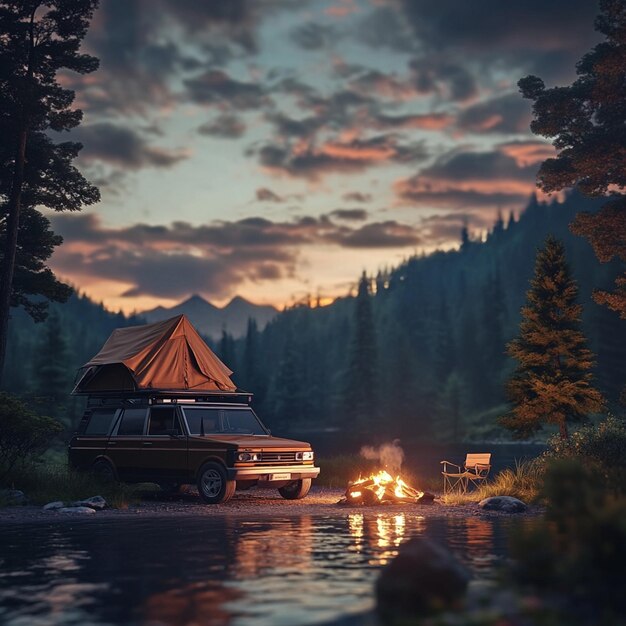
Planning Your Camping Trip: Permits, Reservations, and Fees
Proper planning is paramount for a successful camping trip in a National Forest. This involves understanding permit requirements, making reservations, and being aware of any associated fees. Being prepared ahead of time ensures a smoother and more enjoyable experience.
Do You Need a Permit for Camping?
Permit requirements vary. Many campgrounds require reservations, especially during peak seasons. For dispersed camping (camping outside of designated campgrounds), permits are often not required but check local regulations.
How to Make Reservations
Reservations can be made through Recreation.gov. This website allows you to search for campgrounds, view availability, and make bookings in advance. Planning ahead is crucial, particularly for popular destinations.
Understanding Camping Fees
Many established campgrounds charge fees, which help maintain facilities and support the management of the forest. Dispersed camping is usually free, but you may need to acquire a free permit ensuring compliance with regulations.
Understanding these requirements is a crucial part of the complete guide to camping in US National Forests: Updated for 2025 to ensure a smooth and enjoyable experience.
Essential Gear for Camping in National Forests
Having the right gear can make or break your camping experience. From tents and sleeping bags to cooking equipment and safety supplies, it’s best to be well-prepared. Knowing what to pack can significantly enhance your comfort and safety in the great outdoors.
Basic Camping Equipment
A sturdy tent, a comfortable sleeping bag, and a reliable sleeping pad are essential. Consider the weather conditions of the location for the right insulation and protection.
Cooking and Food Supplies
A portable stove, cooking utensils, and a cooler for food storage are important. Plan your meals in advance and pack non-perishable items. Don’t forget water and a way to purify it if needed.
Safety and Navigation Tools
- First Aid Kit: A comprehensive first aid kit is a must-have for any camping trip.
- Navigation: A map, compass, or GPS device can help you stay on track.
- Emergency Communication: A whistle, a portable charger, and a satellite communication device can be life-savers.
Being well-equipped is a critical aspect of **The Complete Guide to Camping in US National Forests: Updated for 2025**, ensuring your safety and comfort.

The Complete Guide to Camping in US National Forests: Updated for 2025 – Finding the Perfect Campsite
Selecting the right campsite is crucial for a comfortable and enjoyable camping experience. Whether you prefer a designated campground or the solitude of dispersed camping, knowing how to find the perfect spot can make all the difference. Consider factors like accessibility, amenities, and natural surroundings to optimize your experience.
Designated Campgrounds
Designated campgrounds offer amenities such as restrooms, picnic tables, and fire rings. They provide a structured and convenient camping experience, often requiring reservations.
Dispersed Camping
Dispersed camping allows you to camp outside of designated campgrounds, providing a more secluded experience. However, it requires self-sufficiency and adherence to Leave No Trace principles. Consider the following tips:
- Location: Look for established sites to minimize your impact.
- Water Source: Ensure you have access to a water source or bring enough water with you.
- Regulations: Be aware of any restrictions or guidelines for dispersed camping in the area.
Choosing the right campsite is essential. The Complete Guide to Camping in US National Forests: Updated for 2025 emphasizes the importance of finding a spot that meets your needs and preferences.
Safety and Etiquette in US National Forests
Ensuring your safety and practicing proper etiquette are vital for preserving the natural beauty of US National Forests. Being aware of potential hazards and following responsible camping practices helps protect both yourself and the environment. Preparation and respect are key to maintaining the integrity of these precious lands.
Wildlife Awareness
Be aware of local wildlife, including bears, mountain lions, and smaller animals. Store food properly and avoid approaching or feeding wildlife. Knowing how to react to encounters can reduce the risk of incidents.
Leave No Trace Principles
Leave No Trace principles guide responsible outdoor recreation. Pack out all trash, minimize campfire impacts, respect wildlife, and leave the area as you found it.
Fire Safety
Adhere to fire safety regulations, including fire bans. Use existing fire rings or build a mound fire. Always have water and a shovel nearby, and never leave a fire unattended. Extinguish fires completely before leaving the campsite.
Safety and responsible behavior are non-negotiable aspects of The Complete Guide to Camping in US National Forests: Updated for 2025.
The Complete Guide to Camping in US National Forests: Updated for 2025 – Popular Destinations
The United States boasts numerous stunning National Forests, each offering unique landscapes and camping opportunities. From the Pacific Northwest to the Appalachian Mountains, selecting the ideal destination can significantly enhance your camping adventure. These locations promise unforgettable experiences and a chance to connect with nature’s beauty.
Pacific Northwest: Olympic National Forest
Known for its diverse ecosystems, including rainforests, mountains, and coastlines, Olympic National Forest in Washington State offers numerous campgrounds and hiking trails.
Southwest: Coconino National Forest
Located in Arizona, Coconino National Forest is famous for its red rock formations, pine forests, and the iconic city of Sedona. Dispersed camping is widely available.
Southeast: White Mountain National Forest
Spanning across New Hampshire and Maine, White Mountain National Forest offers rugged terrain, scenic vistas, and popular hiking trails, including parts of the Appalachian Trail.
Exploring these destinations is a highlight of **The Complete Guide to Camping in US National Forests: Updated for 2025**, showcasing the diverse beauty of America’s natural landscapes.
| Key Point | Brief Description |
|---|---|
| ⛺ Permits & Reservations | Check requirements and book via Recreation.gov. |
| 🎒 Essential Gear | Tent, sleeping bag, cooking supplies, first aid kit. |
| 🔥 Fire Safety | Follow rules, never leave unattended, extinguish completely. |
| 🐻 Wildlife Awareness | Store food safely, avoid approaching animals. |
Frequently Asked Questions (FAQ)
Generally, dispersed camping in US National Forests does not require a permit unless specified by local regulations. Always check with the local Forest Service office to confirm.
Leave No Trace principles include packing out all trash, minimizing campfire impacts, respecting wildlife, and leaving the area as you found it. These help preserve natural environments.
Reservations for many campsites in US National Forests can be made through Recreation.gov. It’s best to book in advance, especially during peak seasons, to secure your spot.
If you encounter a bear, stay calm, make yourself look large, and make noise. Carry bear spray and know how to use it. Never approach or feed the bear.
A comprehensive first aid kit should include bandages, antiseptic wipes, pain relievers, blister treatment, insect repellent, sunscreen, and any personal medications. A guide can also be helpful.
Conclusion
Camping in US National Forests offers incredible opportunities to immerse yourself in nature’s beauty. By following the complete guide to camping in US National Forests: Updated for 2025 recommendations for planning, packing, and staying safe, you can create unforgettable memories.
Always prioritize responsible camping practices to preserve these natural treasures for future generations. Happy camping!
